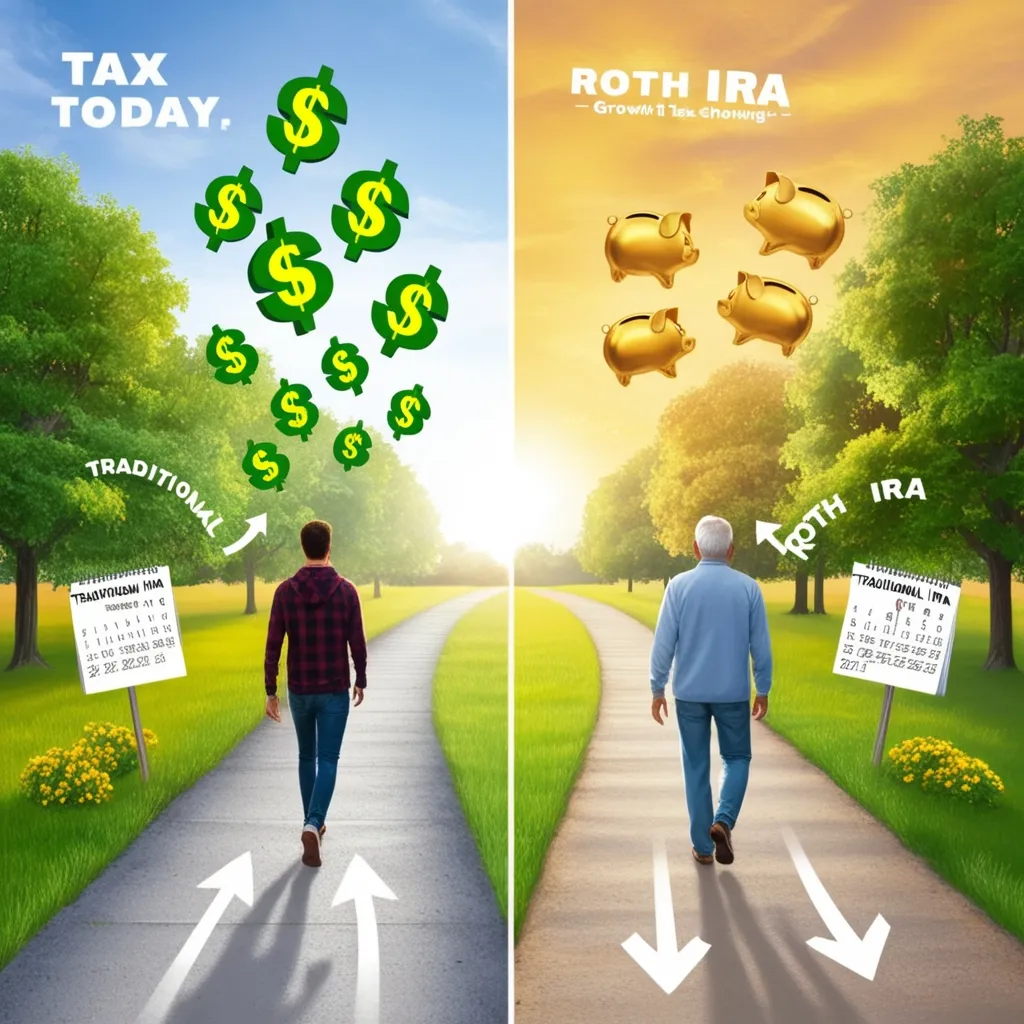When it’s time to think about retirement, it can feel like navigating a maze of choices and decisions. Two heavyweight options in this maze are the Roth IRA and the traditional IRA. Each has its own perks and quirks. Let’s break down the essentials in a relaxed, easy-to-digest way.
Tax Perks: Now vs. Later
One of the big differences between Roth IRAs and traditional IRAs is when you get a break on your taxes. Traditional IRAs let you contribute with pre-tax dollars, which lowers your taxable income for the year—awesome if you’re looking for an immediate tax break. But remember, once you start taking money out in retirement, you’ll owe taxes on both the original contributions and any earnings.
The Roth IRA flips the script. You contribute with money that’s already been taxed, so there’s no immediate tax break. However, down the road, when you start withdrawing in retirement, the money comes out tax-free. This can be a sweet deal if you think you’ll be in a higher tax bracket later on.
How Much Can You Contribute?
For 2024, you can sock away up to $7,000 in either type of IRA, and if you’re 50 or older, you get to bump that up to $8,000. The Roth IRA, though, adds a twist: income limits. If your income is too high, your ability to contribute could be phased out or even eliminated altogether.
On the flip side, traditional IRAs don’t have these income caps for contributions. But there’s a catch—if either you or your spouse is covered by a workplace retirement plan and your income is above certain levels, the tax-deductibility of your contributions might be limited.
Unpacking Withdrawal Rules
These two types of IRAs have pretty different rules for taking your money out. Traditional IRAs require what’s known as required minimum distributions (RMDs) starting at age 73. That means you’ll have to pull out a specified amount each year, no matter if you need the money or not, and pay taxes on those withdrawals.
Roth IRAs don’t demand RMDs during your lifetime, which gives your money more time to grow tax-free. This flexibility can be a lifesaver if you don’t need immediate cash in retirement and want to let your investments keep working for you.
Early Withdrawals: Pros and Cons
Getting to your money early? Traditional IRAs make it a bit painful. Withdrawing before age 59 ½ slaps you with a 10% penalty and adds the amount to your taxable income for the year. There are some exceptions, like buying your first home or covering certain medical expenses, but they’re few and far between.
Roth IRAs offer a bit more leniency. You can pull out your contributions (not the earnings) whenever you want, with no penalties or taxes. However, taking out earnings early—before age 59 ½ or within five years of opening the account—could still bring penalties and taxes.
Thinking About the Heirs
When planning what you want to leave behind, Roth IRAs tend to be the favorite. Since you’ve already paid taxes on your contributions, the beneficiaries can inherit the account tax-free. Traditional IRAs, on the other hand, hit them with taxes on withdrawals, which can take a chunk out of their inheritance.
Forecasting Future Taxes
Choosing between a Roth and traditional IRA often hinges on guessing your future tax situation. If you think you’ll be in a higher tax bracket during retirement, a Roth IRA could save you money in the long run. Pay taxes now and avoid potentially higher taxes later. But if you expect to be in a lower tax bracket, a traditional IRA might make more sense, letting you defer taxes until withdrawals when your tax rate might be cheaper.
The tricky part? Predicting future tax rates is a bit like reading tea leaves—tax laws can change, and personal financial situations can shift over the decades. Focus on your current financial status and long-term goals rather than banking on future tax guesses.
Flexibility and Portability
Roth IRAs take the cake when it comes to flexibility. The freedom to withdraw contributions at any time without penalties is a major plus, especially if you might need quick access to your cash before retirement.
Traditional IRAs might feel restrictive, but they do offer some ease in rolling over funds from other retirement accounts like 401(k)s and 403(b)s. This can make consolidating your retirement savings smoother.
Deciding What’s Best For You
Deciding between a Roth and traditional IRA boils down to your personal financial picture. Here are some points to ponder:
- Do you crave an immediate tax benefit? If so, a traditional IRA might be your go-to.
- Are you jealous of tax-free withdrawals in retirement? Then perhaps a Roth IRA is more your speed.
- Do you need flexibility with your withdrawals? A Roth IRA’s penalty-free access to contributions could be a big draw.
- Thinking about your legacy? A Roth IRA is typically more tax-friendly for your heirs.
Answering these questions can bring clarity and help you pick the type of IRA that aligns with your financial objectives and life plan. Both Roth IRAs and traditional IRAs are powerful tools for amping up your retirement savings. Understanding their differences and how they fit into your financial strategy is the key to making the best choice for a secure future.
Making informed decisions now can pave the way for a comfortable and worry-free retirement. Whether you lean towards the immediate tax benefits of a traditional IRA or the future tax-free perks of a Roth IRA, what’s crucial is to start saving and to keep your financial goals in sight as you move through life.






